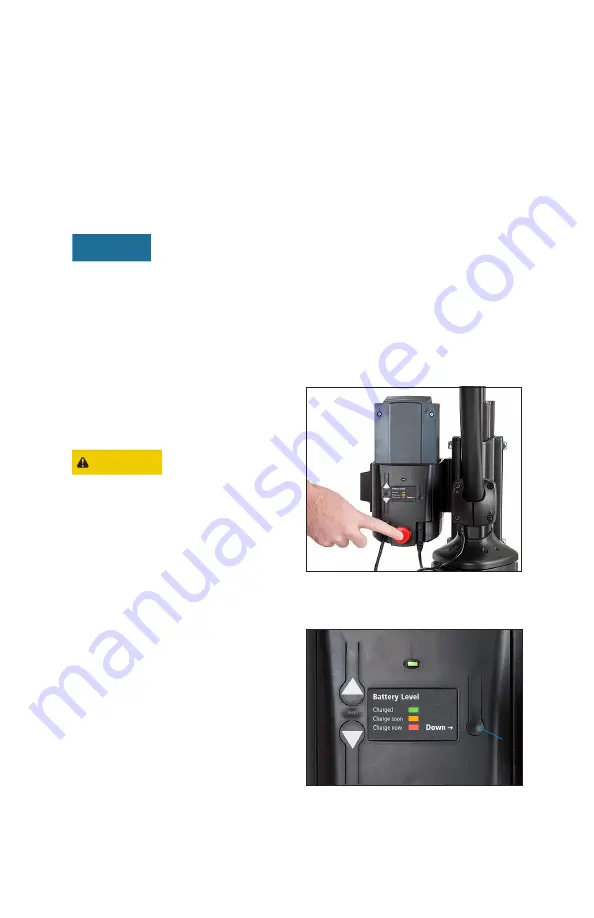
10
depleted. A fully charged battery will give
approximately 70 complete lift cycles.
To prevent damage to the battery, charge it
when the light turns yellow. The indicator
light will extinguish 10 minutes after the
last activation of the up/down switch. It
will turn on again if the up/down switch
is used or if a battery is inserted into the
control box.
If the battery level
becomes critically low,
indicated by the battery level light turning
red, the microprocessor will disable the
up/down switch. However, the emergency
lowering button will continue to function.
The emergency lowering button will continue
to function even if the battery level has
dropped below the threshold for operation
of the up/down switch. It overrides all other
inputs.
To prevent injury, all
caregivers should
become familiar with the location and
operation of the emergency stop button
and the emergency lowering button
before using the TRAM.
Emergency stop button
Figure 10a:
To stop the TRAM motor in the
event of an emergency, press the round
red emergency stop button, located on the
front of the control box. Twist it clockwise
to reset it.
Emergency lowering button
Figure 10b:
The emergency lowering
button (A), located on the front of the
control box, provides a means of lowering
the body support if the up/down switch
fails.
Press the emergency lowering button to
lower the body support as required.
NOTICE
CAUTION
Figure 10a
Figure 10b
A
A

























